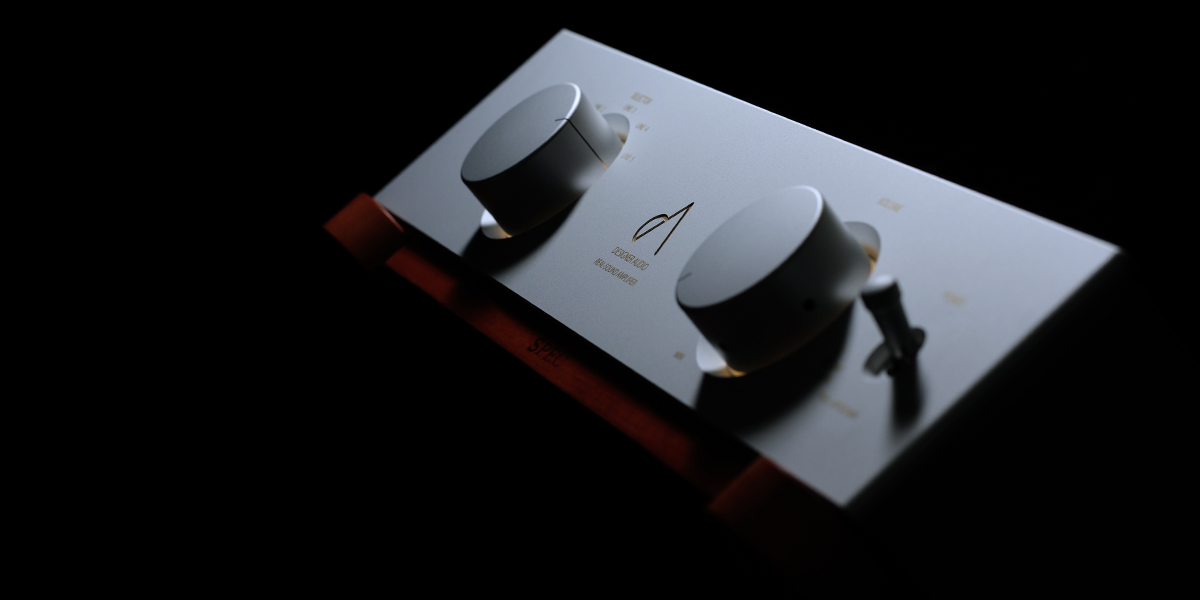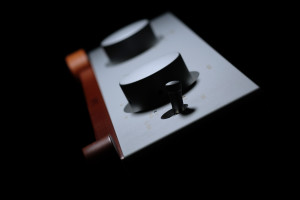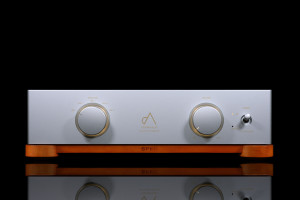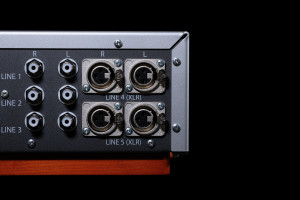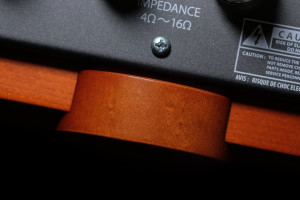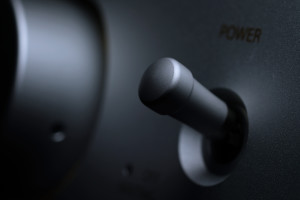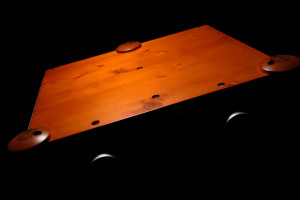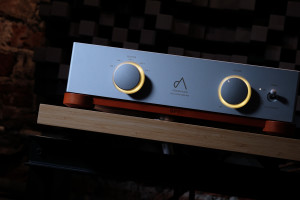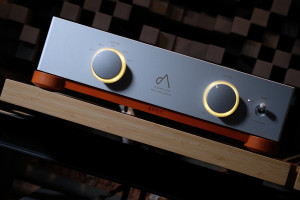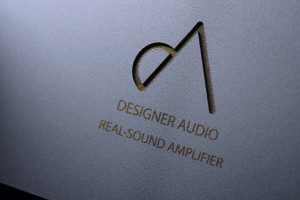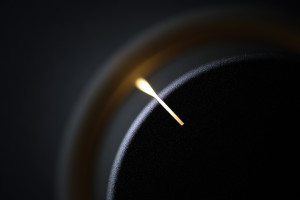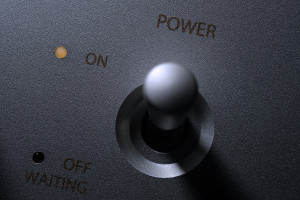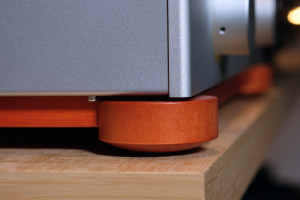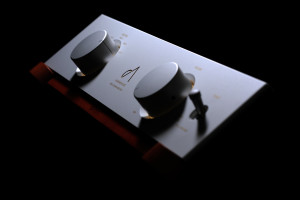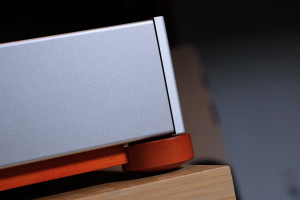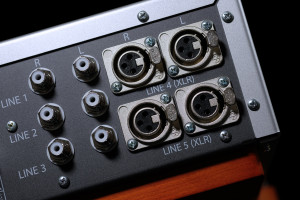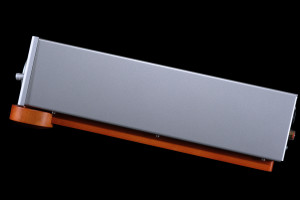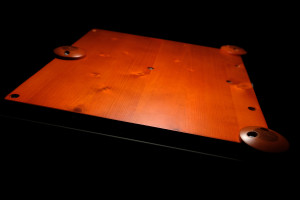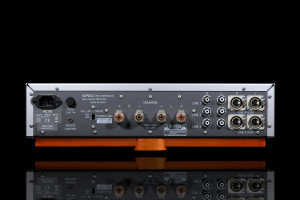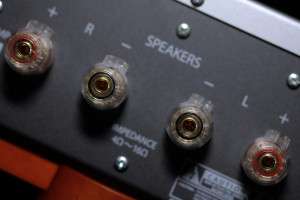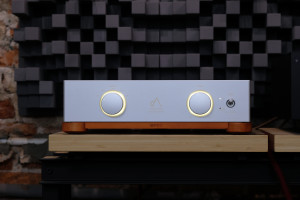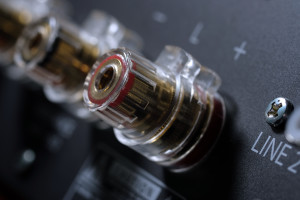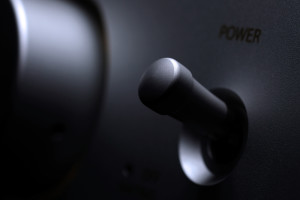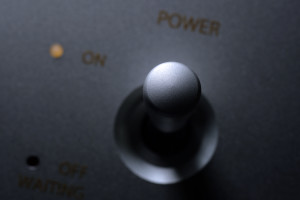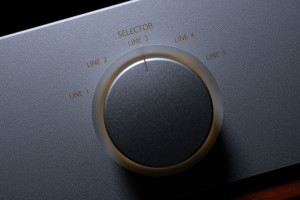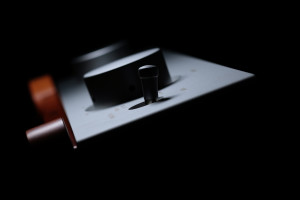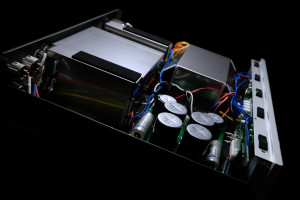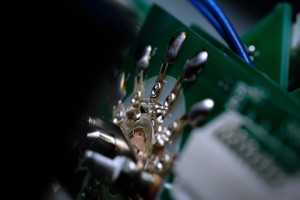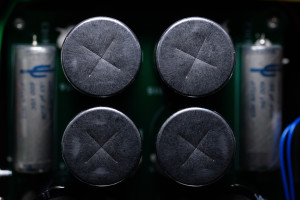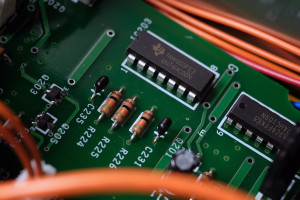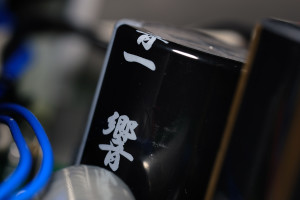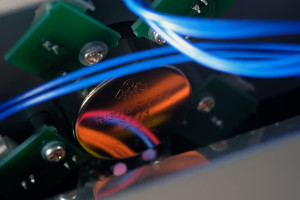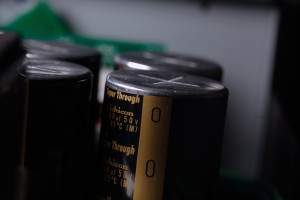Many enthusiasts view class D amps as not exactly thrilling, but once in a while a product capable of breaking free from usual labels associated with this topology emerges. The machine sent to me just recently – SPEC RSA-M99 integrated amplifier – is said to be one such a case. Well, is it?
Introduction
Even though today’s report marks my first adventure with products by Japanese SPEC Corporation, I’ve been familiar with this company’s unusual work for several years. Its presence at various shows topped via numerous enthusiastic reviews, all painted the picture intriguing enough to colour me deeply interested. After hearing and reading about very much musical valve-alike performance delivered via class D circuits said to be pretty much lifeless, who wouldn’t be? The Nipponese take on audio early on can be viewed as obscure and esoteric to us Europeans, but that’s of minor importance. We’re good as long as even the most twisted audio plots are backed by solid sonics and that’s exactly my experience with Japanese products auditioned thus far. But does this review’s case fit the description as well? Ah, that’s the most interesting question. At this point my usual route would include people behind SPEC Corporation and its general profile, but these subjects were already extensively covered in Srajan’s work here and here. What’s left to do is to list this company’s three key individuals; Shirokazu Yazaki, Jun Honda and Tsutomu Banno. Yazaki-san for many years worked for Teac and Pioneer and for decades has been into SET amplifiers, horn speakers and all associated vintage goodness, still very popular in Japan. He and Honda-san have known each other from their Pioneer days way back in the past. The latter gent at some point moved to USA and started his work for International Rectifiers, where he was involved in development of class D circuits. The two engineers started SPEC Corporation in February 2010 to pursue valve sound, albeit delivered via modern class D hardware. At some point Banno-san, previously also on IR’s payroll, joined the crew and eventually became SPEC’s chief engineer.
At this point my usual route would include people behind SPEC Corporation and its general profile, but these subjects were already extensively covered in Srajan’s work here and here. What’s left to do is to list this company’s three key individuals; Shirokazu Yazaki, Jun Honda and Tsutomu Banno. Yazaki-san for many years worked for Teac and Pioneer and for decades has been into SET amplifiers, horn speakers and all associated vintage goodness, still very popular in Japan. He and Honda-san have known each other from their Pioneer days way back in the past. The latter gent at some point moved to USA and started his work for International Rectifiers, where he was involved in development of class D circuits. The two engineers started SPEC Corporation in February 2010 to pursue valve sound, albeit delivered via modern class D hardware. At some point Banno-san, previously also on IR’s payroll, joined the crew and eventually became SPEC’s chief engineer.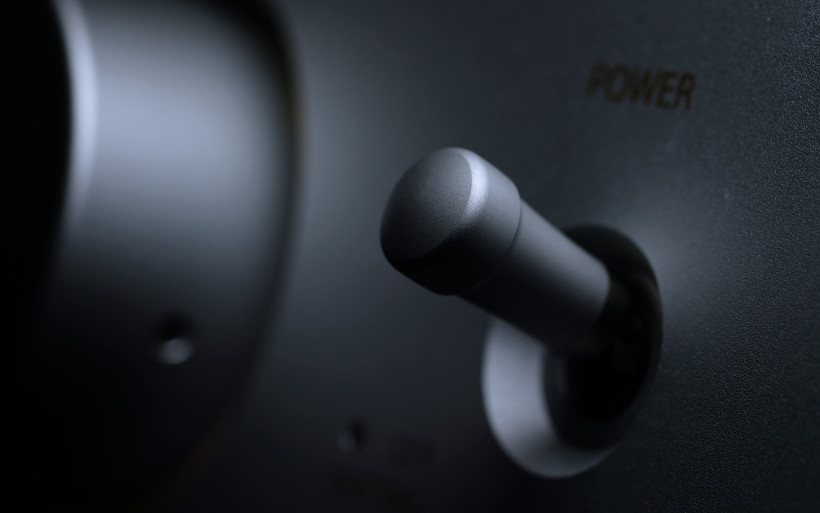 Yazaki-san’s firm reference point found in horn loads connected to machines with DHT valves on-board is the key takeaway from the brief history above. If this sound profile known from the get-go was the ultimate goal, and the usage of modern switching amplification topology was set in stone very early on as well, then this review’s SPEC should tell the story about the result of these two mutually exclusive things somehow combined. Many individuals would brand such a case of old and new not versus but together as a mission impossible, however SPEC’s track record says otherwise.
Yazaki-san’s firm reference point found in horn loads connected to machines with DHT valves on-board is the key takeaway from the brief history above. If this sound profile known from the get-go was the ultimate goal, and the usage of modern switching amplification topology was set in stone very early on as well, then this review’s SPEC should tell the story about the result of these two mutually exclusive things somehow combined. Many individuals would brand such a case of old and new not versus but together as a mission impossible, however SPEC’s track record says otherwise.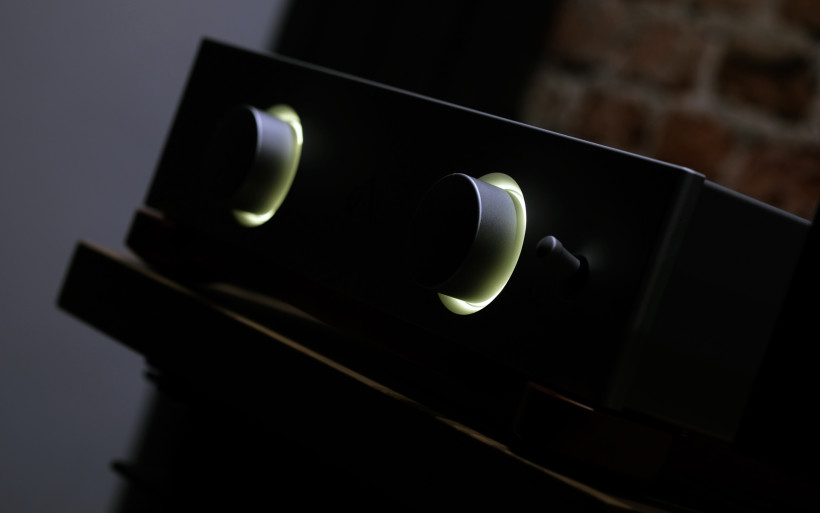 Several words need to be said about how this writing came to be. During this year’s Munich event I had the pleasure to meet Yoshi Hontani of MuSon Project Ltd. This company is the global distributor and authorized exporter of many Japanese brands, products by SPEC included. Hontani-san was already familiar with this site and several brief mails later we had logistics sorted. From there SPEC’s Portuguese distributor – Rui M. Palhinha of Sound Eclipse – sent the package my way. There’s no better time than now to acknowledge both gents’ input in providing me with the RSA-M99 loaner. Much appreciated!
Several words need to be said about how this writing came to be. During this year’s Munich event I had the pleasure to meet Yoshi Hontani of MuSon Project Ltd. This company is the global distributor and authorized exporter of many Japanese brands, products by SPEC included. Hontani-san was already familiar with this site and several brief mails later we had logistics sorted. From there SPEC’s Portuguese distributor – Rui M. Palhinha of Sound Eclipse – sent the package my way. There’s no better time than now to acknowledge both gents’ input in providing me with the RSA-M99 loaner. Much appreciated!
Build
SPEC RSA-M99 arrived inside of a double cardboard. Wrapped in cloth and put in-between precisely cut foam forms, it was perfectly secure. A handy manual and a regular power cord throwaway were also found in the box, on the contrary to a remote control, but we’ll get to the reason behind its absence in a bit.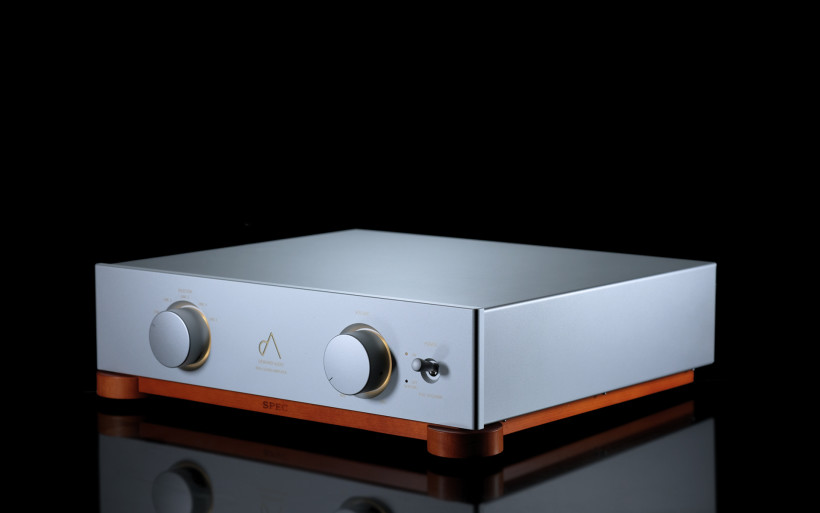 The RSA-M99’s specs list measurements of (W x H x D) 440 × 125 × 414mm and mass of 15.5kg, hence a machine perfectly manageable by just one person. Today’s power output at full blast is a stout 120wpc into 4Ω and frequency response is 10Hz – 30kHz (+/-1dB, 6Ω, 1W). Then there’s harmonic distortion ratio of 0.02% (@1kHz, 80% output), input sensitivity of 300mVrms and 37.3dB gain (@max vol. level, 6Ω, 1kHz signal and unbalanced input). Power consumption of 15W with no signal, at max. output goes to 215W (8Ω, 100 Hz). Cleverly implemented class D topology became SPEC’s trademark and today’s RSA-M99 fits the portfolio as well.
The RSA-M99’s specs list measurements of (W x H x D) 440 × 125 × 414mm and mass of 15.5kg, hence a machine perfectly manageable by just one person. Today’s power output at full blast is a stout 120wpc into 4Ω and frequency response is 10Hz – 30kHz (+/-1dB, 6Ω, 1W). Then there’s harmonic distortion ratio of 0.02% (@1kHz, 80% output), input sensitivity of 300mVrms and 37.3dB gain (@max vol. level, 6Ω, 1kHz signal and unbalanced input). Power consumption of 15W with no signal, at max. output goes to 215W (8Ω, 100 Hz). Cleverly implemented class D topology became SPEC’s trademark and today’s RSA-M99 fits the portfolio as well.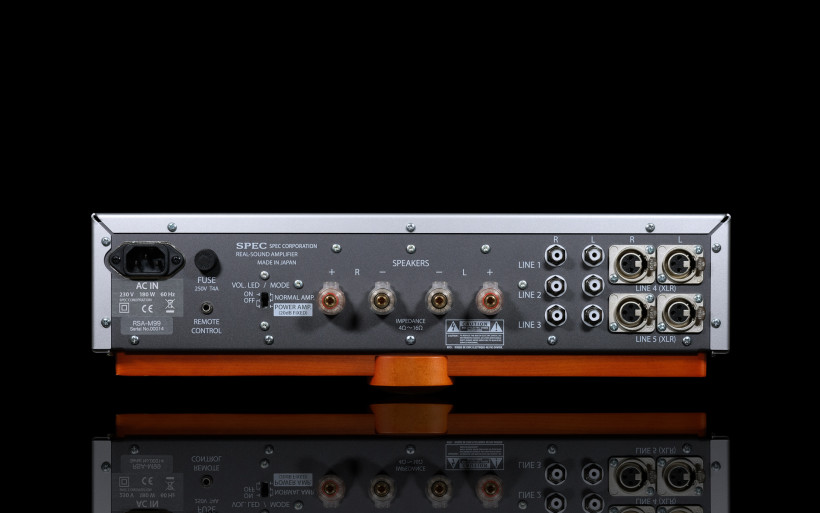 Due to their voicing, SPEC’s amps are labeled by their manufacturer as ‘real-sound amplifiers’. In this context, the ‘real-sound’ phrase has to relate to the charm Yazaki-san discovered in his beloved vintage hardware decades ago. Since all his products under the SPEC banner pursue this particular direction, it makes sense. And if anyone wonders about the class D route instead of anything else, it’s quite logic. Products powerful enough to handle modern loads far less sensitive than vintage horns was the very much practical goal, and the SPEC team’s experience with switching circuits its backbone. Put shortly, all the know-how necessary to implement this topology in the musical fashion was already on the table.
Due to their voicing, SPEC’s amps are labeled by their manufacturer as ‘real-sound amplifiers’. In this context, the ‘real-sound’ phrase has to relate to the charm Yazaki-san discovered in his beloved vintage hardware decades ago. Since all his products under the SPEC banner pursue this particular direction, it makes sense. And if anyone wonders about the class D route instead of anything else, it’s quite logic. Products powerful enough to handle modern loads far less sensitive than vintage horns was the very much practical goal, and the SPEC team’s experience with switching circuits its backbone. Put shortly, all the know-how necessary to implement this topology in the musical fashion was already on the table. 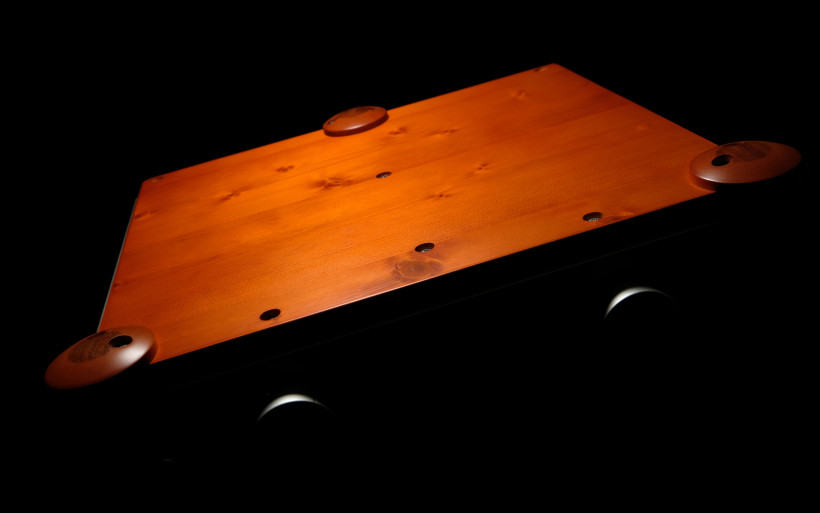 At the SPEC site we see all listed amplifiers described as musical instruments and the RSA-M99 showed me clearly why so. This product’s visually fabulous solid spruce base not only has everything else on top of it, but itself sits on three slightly rounded short legs made of two different types of wood. Each footer incorporates maple surround with one hickory puck embedded inside, assembled in such a way that only the latter element is in contact with ground. Subjectively speaking, aesthetics of this solution are brilliant, but influence on sonics is its primary task. At first glance I’d thought of this wooden contraption as a decoupling scheme, however its natural resonance the team SPEC exploits as a sound tuning measure. No vents anywhere in sight on the RSA-M99’s bottom also indicate its heat-free attitude and rightfully so. Regardless of how hard was this deck pushed at my place, not even once it went beyond the barely warm state at most.
At the SPEC site we see all listed amplifiers described as musical instruments and the RSA-M99 showed me clearly why so. This product’s visually fabulous solid spruce base not only has everything else on top of it, but itself sits on three slightly rounded short legs made of two different types of wood. Each footer incorporates maple surround with one hickory puck embedded inside, assembled in such a way that only the latter element is in contact with ground. Subjectively speaking, aesthetics of this solution are brilliant, but influence on sonics is its primary task. At first glance I’d thought of this wooden contraption as a decoupling scheme, however its natural resonance the team SPEC exploits as a sound tuning measure. No vents anywhere in sight on the RSA-M99’s bottom also indicate its heat-free attitude and rightfully so. Regardless of how hard was this deck pushed at my place, not even once it went beyond the barely warm state at most.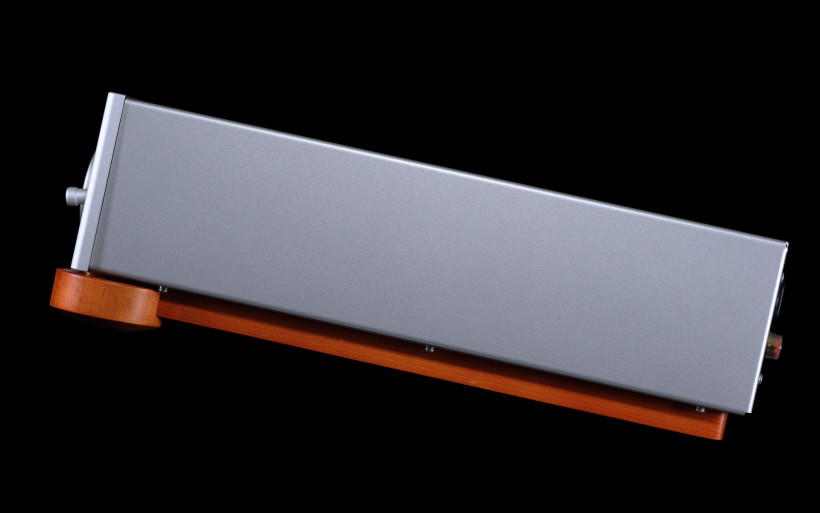 SPEC RSA-M99’s sandblasted front sports a large finely cut Designer Audio logo in the middle with two hefty knobs positioned symmetrically on its sides; a line input selector and rotary volume control. Each is nicely backlit via four pleasantly yellow LEDs, incorporated cleverly to evenly light up their surroundings yet remain unseen whilst doing so. The main on/off locking lever near the right ledge neighbours with two diodes, which indicate whether the product’s on or off. The switch itself is loaded with a spring, and needs to be pushed back and held in order to be then moved up or down. This neat trick seen in military and medical equipment prevents the machine’s sudden power on or shutdown, at home most likely unintentionally executed by i.e. kids or animals.
SPEC RSA-M99’s sandblasted front sports a large finely cut Designer Audio logo in the middle with two hefty knobs positioned symmetrically on its sides; a line input selector and rotary volume control. Each is nicely backlit via four pleasantly yellow LEDs, incorporated cleverly to evenly light up their surroundings yet remain unseen whilst doing so. The main on/off locking lever near the right ledge neighbours with two diodes, which indicate whether the product’s on or off. The switch itself is loaded with a spring, and needs to be pushed back and held in order to be then moved up or down. This neat trick seen in military and medical equipment prevents the machine’s sudden power on or shutdown, at home most likely unintentionally executed by i.e. kids or animals.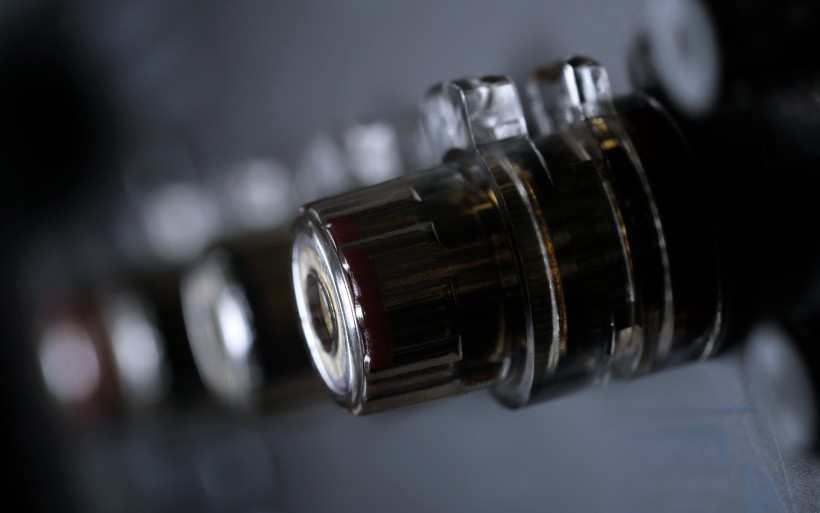 The RSA-M99’s sides and top form one U-shaped aluminium enclosure piece, coated with nice satin-alike paint and held by several screws underneath and on its rear. Upon dismounting it feels substantial. The product’s back houses an IEC inlet in the far left corner, a self-replaceable fuse port just next to it and an analogue opening for remote control is located a bit below. Today’s item doesn’t have a RC module inside due to sonic reasons. Every source of noise engineers at SPEC could eliminate, they did. That’s why noisy wireless receivers with their own noisy circuits were pushed outside the machine to a standalone RSR-1 box, sold separately. As long as this functionality can be added, yours truly couldn’t care less. Japanese engineering minds are known for focus not on savings but sound quality in the first place. If lack of an RC is what it takes to push performance a notch further, that’s fine in my book.
The RSA-M99’s sides and top form one U-shaped aluminium enclosure piece, coated with nice satin-alike paint and held by several screws underneath and on its rear. Upon dismounting it feels substantial. The product’s back houses an IEC inlet in the far left corner, a self-replaceable fuse port just next to it and an analogue opening for remote control is located a bit below. Today’s item doesn’t have a RC module inside due to sonic reasons. Every source of noise engineers at SPEC could eliminate, they did. That’s why noisy wireless receivers with their own noisy circuits were pushed outside the machine to a standalone RSR-1 box, sold separately. As long as this functionality can be added, yours truly couldn’t care less. Japanese engineering minds are known for focus not on savings but sound quality in the first place. If lack of an RC is what it takes to push performance a notch further, that’s fine in my book.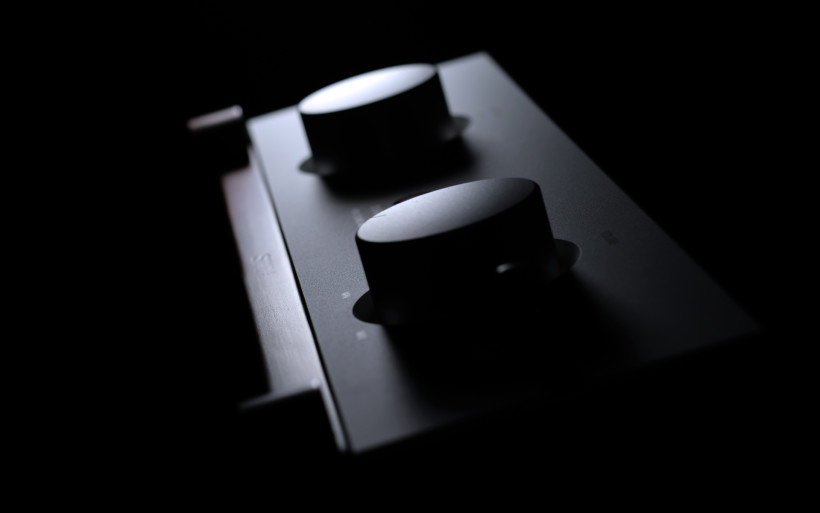 Moving on, a small switch right next to the RC input turns the RSA-M99’s frontal lights on/off and also sets the machine as a power amp. Once this happens, its yellow LEDs automatically go dim, both knobs become inactive and line inputs are fixed at approx. 20dB gain. Translucent speaker terminals next in line not only will accept any type of cable finishes, but also sport handy top inlets exclusively for spades. Five analog inputs in total (3x RCA and 2x XLR) close the list. As far as build quality and looks go, SPEC RSA-M99 scores very high notes. Upon closer inspection it’s clear that a lot of work was put into this tank-alike product. Its knobs and switches are a pleasure to use, all parts are finely combined together and not even one reason to complain was found. Today’s looks and feels like a costly audio product, that’s for sure.
Moving on, a small switch right next to the RC input turns the RSA-M99’s frontal lights on/off and also sets the machine as a power amp. Once this happens, its yellow LEDs automatically go dim, both knobs become inactive and line inputs are fixed at approx. 20dB gain. Translucent speaker terminals next in line not only will accept any type of cable finishes, but also sport handy top inlets exclusively for spades. Five analog inputs in total (3x RCA and 2x XLR) close the list. As far as build quality and looks go, SPEC RSA-M99 scores very high notes. Upon closer inspection it’s clear that a lot of work was put into this tank-alike product. Its knobs and switches are a pleasure to use, all parts are finely combined together and not even one reason to complain was found. Today’s looks and feels like a costly audio product, that’s for sure.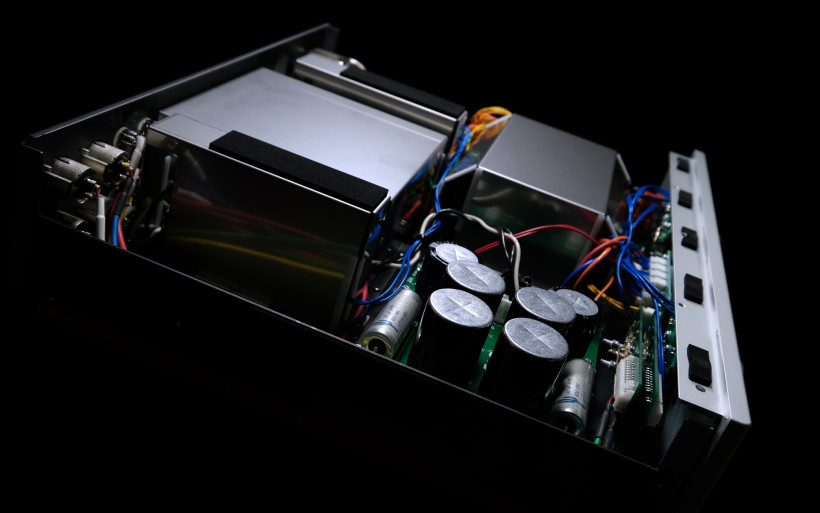 SPEC RSA-M99 also doesn’t disappoint internally. The very smooth and silent volume knob is connected to a Tocos potentiometer and the attenuation task itself is handled in the analogue domain, which would imply the usual. However, the rotary knob’s turns adjust volume mechanically via DC voltage shifts (0.5dB x 256 steps) in the machine’s control unit connected to a MUX module, and do so in precise super-gradual and rapid fashion, of course outside of the audio path.
SPEC RSA-M99 also doesn’t disappoint internally. The very smooth and silent volume knob is connected to a Tocos potentiometer and the attenuation task itself is handled in the analogue domain, which would imply the usual. However, the rotary knob’s turns adjust volume mechanically via DC voltage shifts (0.5dB x 256 steps) in the machine’s control unit connected to a MUX module, and do so in precise super-gradual and rapid fashion, of course outside of the audio path.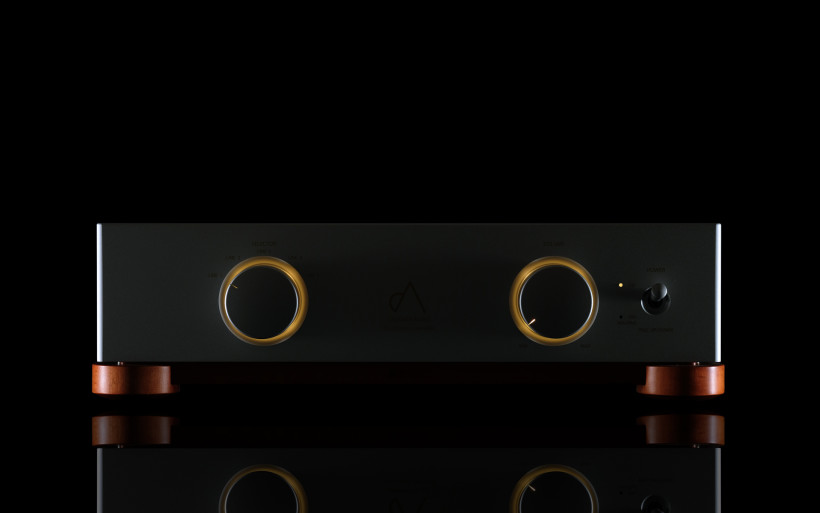 The product’s linear PSU is based on a R-core transformer, complemented via various electrolytic capacitors and ROHM’s high-voltage high-current Shottky’s SiC (silicon carbide) rectifier diodes, used to eliminate switching noise. Large steel sheets shield the RSA-M99’s key sections (the PSU, two reconstruction filters and the main amplification circuit) from electromagnetic noise. The chassis itself also got EMC coating internally applied.
The product’s linear PSU is based on a R-core transformer, complemented via various electrolytic capacitors and ROHM’s high-voltage high-current Shottky’s SiC (silicon carbide) rectifier diodes, used to eliminate switching noise. Large steel sheets shield the RSA-M99’s key sections (the PSU, two reconstruction filters and the main amplification circuit) from electromagnetic noise. The chassis itself also got EMC coating internally applied. SPEC RSA-M99 is based on International Rectifier’s analogue PWM switching and class D amplifier with MOS-FETs in its main power stage. It’s fair to ask how such a circuit can produce performance any comparable to SET machines loaded with DHTs. In today’s case class D is ‘just’ a measure for linearity, minimal energy wasted, instant current delivery, enough power output on tap to handle modern loads and then some. But the most important thing – sound quality – is the result of extensive tuning work. It involves the already mentioned tone-wood base and generous internal shielding, but also careful component selection and here unusual capacitor choices step in. The RSA-M99’s PSU section incorporates Nichicon’s KG Super Tough electrolytes and special paper-in-oil Hibiki-Ichi caps developed for SPEC exclusively.
SPEC RSA-M99 is based on International Rectifier’s analogue PWM switching and class D amplifier with MOS-FETs in its main power stage. It’s fair to ask how such a circuit can produce performance any comparable to SET machines loaded with DHTs. In today’s case class D is ‘just’ a measure for linearity, minimal energy wasted, instant current delivery, enough power output on tap to handle modern loads and then some. But the most important thing – sound quality – is the result of extensive tuning work. It involves the already mentioned tone-wood base and generous internal shielding, but also careful component selection and here unusual capacitor choices step in. The RSA-M99’s PSU section incorporates Nichicon’s KG Super Tough electrolytes and special paper-in-oil Hibiki-Ichi caps developed for SPEC exclusively. The most impressive cap type to look at is the CS50309 specimen from the Blue Cactus range, made by Tucson’s Arizona Capacitors. This military-grade model impregnated via high-purity mineral oil sports Kraft paper, aluminium-foil electrode and Mylar dielectric, all stuffed inside of hermetically sealed brass housing and copper leads, both tin-plated. High efficiency downstairs, soft treble and long life span are said to be this capacitor’s key features. It’s used in the RSA-M99’s power supply and also output filters alongside mica caps. Still, the best part about the CS50309 is its origin; it was manufactured by West Cap (in the early 90s renamed to, yup, Arizona Capacitors) in 1967 for the US Military and known as CPV09 back then. Once everything above is taken into account, it becomes quite clear that the team SPEC plays the very non-mainstream and surely difficult game. Now it’s time to find out whether they’re winners.
The most impressive cap type to look at is the CS50309 specimen from the Blue Cactus range, made by Tucson’s Arizona Capacitors. This military-grade model impregnated via high-purity mineral oil sports Kraft paper, aluminium-foil electrode and Mylar dielectric, all stuffed inside of hermetically sealed brass housing and copper leads, both tin-plated. High efficiency downstairs, soft treble and long life span are said to be this capacitor’s key features. It’s used in the RSA-M99’s power supply and also output filters alongside mica caps. Still, the best part about the CS50309 is its origin; it was manufactured by West Cap (in the early 90s renamed to, yup, Arizona Capacitors) in 1967 for the US Military and known as CPV09 back then. Once everything above is taken into account, it becomes quite clear that the team SPEC plays the very non-mainstream and surely difficult game. Now it’s time to find out whether they’re winners.
Sound
In order to review the SPEC RSA-M99, fidata HFAS-S10U handled storage and transport duties, then LampizatOr Pacific DAC (KR Audio T-100/Living Voice 300B + KR Audio 5U4G Ltd. Ed.) took over to pass the signal either to Kinki Studio EX-M1 or Trilogy 925, and then to Boenicke W8 or supportively no less demanding Xavian Jolly. All key components were connected via LessLoss C-MARC cables to the GigaWatt PC-3 SE EVO+ power conditioner, which was then married to the main in-wall outlet via LC-3 EVO cable by the same manufacturer. The Amber-modded Excellence ICs by Audiomica Laboratory were used in-between my DAC and amps, which then connected to all loads via Boenicke Audio S3 speaker cables.
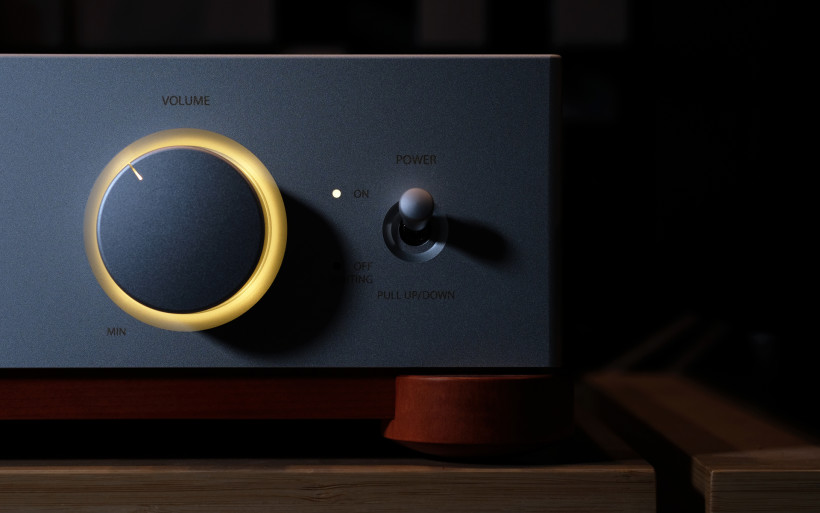 After reading numerous articles about SPEC products, I had a faint idea of what to expect. However, all class D specimens auditioned thus far gave me no firm reason to think that today’s can push outside the usual voicing envelope completely, namely beyond sound fast, tight and open, but to a degree also rather dry and somewhat lifeless. The only product to partially stand out of this crowd was a pair of NuForce REF 9 V3SE mono amps I happily owned many springs ago. Since then I moved on, so I can’t comment in any meaningful way how these stealthy lookers would fare against today’s machine. But class A, AB, D, tubes, transistors, hybrids and all personal fads aside, one thing I’ll say as early as now: I haven’t yet heard a product such as this review’s peculiar SPEC RSA-M99.
After reading numerous articles about SPEC products, I had a faint idea of what to expect. However, all class D specimens auditioned thus far gave me no firm reason to think that today’s can push outside the usual voicing envelope completely, namely beyond sound fast, tight and open, but to a degree also rather dry and somewhat lifeless. The only product to partially stand out of this crowd was a pair of NuForce REF 9 V3SE mono amps I happily owned many springs ago. Since then I moved on, so I can’t comment in any meaningful way how these stealthy lookers would fare against today’s machine. But class A, AB, D, tubes, transistors, hybrids and all personal fads aside, one thing I’ll say as early as now: I haven’t yet heard a product such as this review’s peculiar SPEC RSA-M99.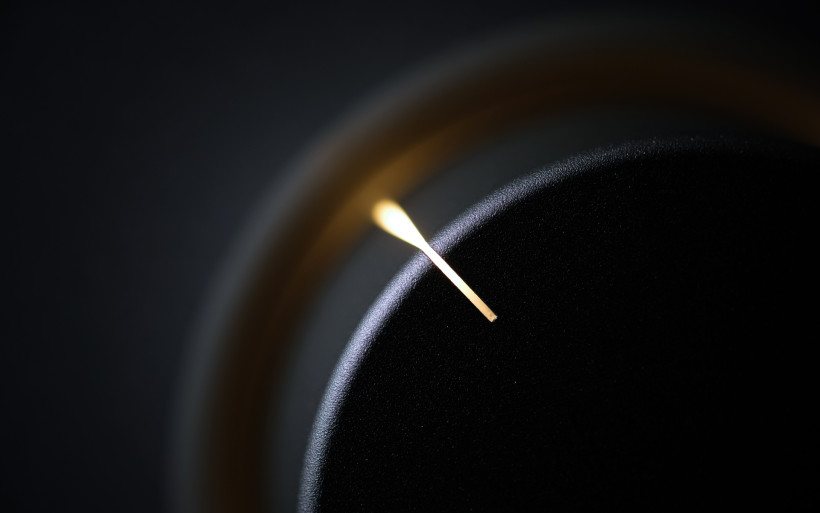 For a reason I branded the RSA-M99 as peculiar. I’ve read in the past that, in spite of their hearts made of class D circuits, all SPEC machines are voiced to sound like classy valve decks. Come to think of it, most manufacturers into products based on such topology want to escape from labels associated with it. Usually we hear about switching implementations different than anything else, but all such statements should be taken with a grain of salt. It’s far better to be pleasantly surprised than the other way around, which also happens to be the reason why I approached the RSA-M99 with careful curiosity if not reserve. I’ve been rolling with the 925 integrated amp for years after all, it’s a helluva machine, I was safe. Or was I? Not. Past the introductory audition I quickly understood two things; no similar product I’m familiar with could possibly prepare me for what today’s SPEC did, and those reviewers who recognized its kin as very much valve alike, were clearly onto something. After three weeks spent with the RSA-M99, I think now I know and understand what they discovered.
For a reason I branded the RSA-M99 as peculiar. I’ve read in the past that, in spite of their hearts made of class D circuits, all SPEC machines are voiced to sound like classy valve decks. Come to think of it, most manufacturers into products based on such topology want to escape from labels associated with it. Usually we hear about switching implementations different than anything else, but all such statements should be taken with a grain of salt. It’s far better to be pleasantly surprised than the other way around, which also happens to be the reason why I approached the RSA-M99 with careful curiosity if not reserve. I’ve been rolling with the 925 integrated amp for years after all, it’s a helluva machine, I was safe. Or was I? Not. Past the introductory audition I quickly understood two things; no similar product I’m familiar with could possibly prepare me for what today’s SPEC did, and those reviewers who recognized its kin as very much valve alike, were clearly onto something. After three weeks spent with the RSA-M99, I think now I know and understand what they discovered.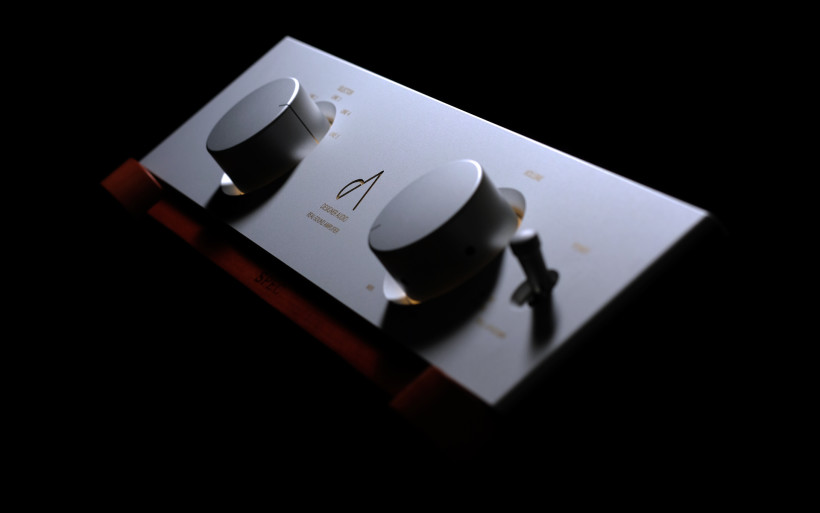 In comparison to the 925 and EX-M1, SPEC’s latest integrated introduced itself as voiced to be very liquid yet not flashy at all. Neither it was as thick and muscular as the former, nor it had the latter’s agility and brute force. At the beginning today’s case struck me as tonally located somewhere in-between my two daily drivers, if a bit closer to the Brit. But the more hours passed by and the more content based on real instruments and subtle female voices was on, the more I started to acknowledge where the RSA-M99 had the far upper hand over its competitors. The difference wasn’t small.
In comparison to the 925 and EX-M1, SPEC’s latest integrated introduced itself as voiced to be very liquid yet not flashy at all. Neither it was as thick and muscular as the former, nor it had the latter’s agility and brute force. At the beginning today’s case struck me as tonally located somewhere in-between my two daily drivers, if a bit closer to the Brit. But the more hours passed by and the more content based on real instruments and subtle female voices was on, the more I started to acknowledge where the RSA-M99 had the far upper hand over its competitors. The difference wasn’t small.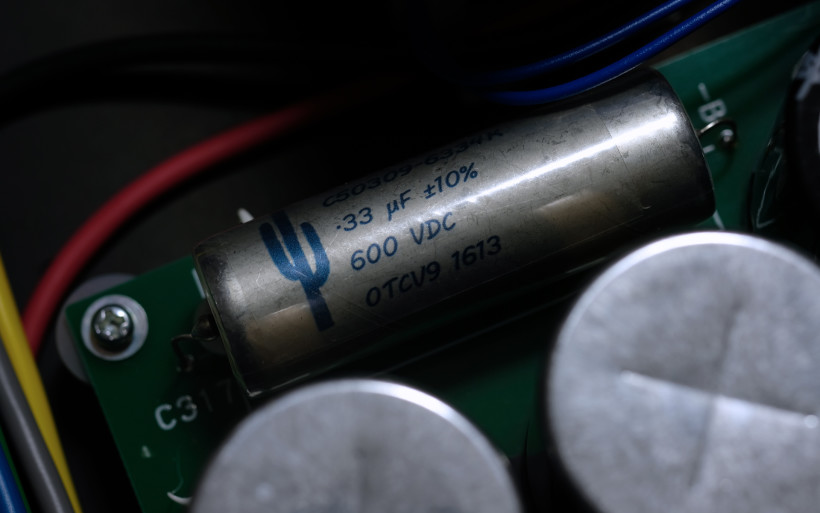 The inherently syrupy and calmly voiced 925 was tonally clearly chunkier than the SPEC. Initially I took this non-bloomy attitude as the latter’s lesser grip over my Swiss load, but this wasn’t the case. The RSA-M99 in fact went a bit lower, had its downstairs tighter and not as dense, but due to upper bass not overloaded it effectively packed sensibly a bit more punch. It simply put lesser attention and emphasis to opulent bass regions, which elevated this realm’s articulation in the process, and thus landed more precise less fuzzy outcome. After several days of easygoing rotations, the 925 morphed into chubbier and slower in comparison, but the “Aha, interesting…” moment arrived once large drums suspended somewhere in the background kicked in. This specific job the SPEC did more effortlessly, meticulously and also palpably. It oozed with textural layers, but applied just the amount of tension to connect everything and present utmost tangible and pleasantly elastic result. This was quite vexing, class D specimens shouldn’t do this, yet the SPEC did.
The inherently syrupy and calmly voiced 925 was tonally clearly chunkier than the SPEC. Initially I took this non-bloomy attitude as the latter’s lesser grip over my Swiss load, but this wasn’t the case. The RSA-M99 in fact went a bit lower, had its downstairs tighter and not as dense, but due to upper bass not overloaded it effectively packed sensibly a bit more punch. It simply put lesser attention and emphasis to opulent bass regions, which elevated this realm’s articulation in the process, and thus landed more precise less fuzzy outcome. After several days of easygoing rotations, the 925 morphed into chubbier and slower in comparison, but the “Aha, interesting…” moment arrived once large drums suspended somewhere in the background kicked in. This specific job the SPEC did more effortlessly, meticulously and also palpably. It oozed with textural layers, but applied just the amount of tension to connect everything and present utmost tangible and pleasantly elastic result. This was quite vexing, class D specimens shouldn’t do this, yet the SPEC did.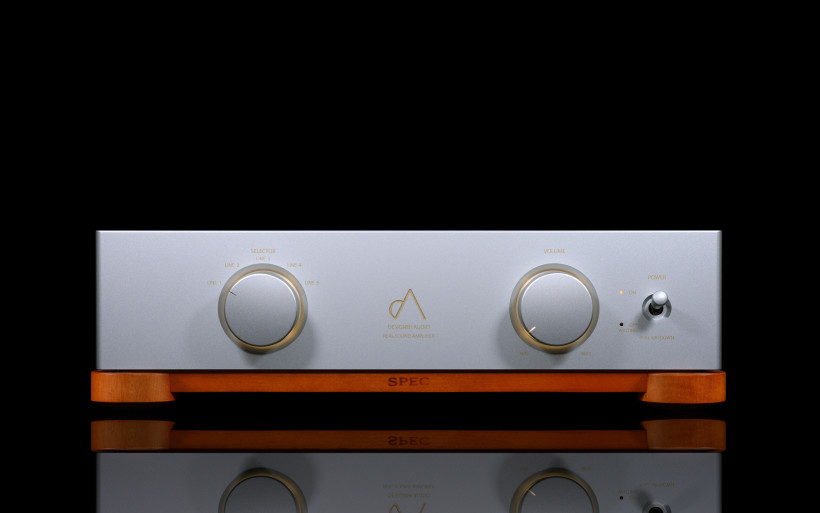 The 925 is a machine purposely geared to be calm and charming, though sensibly powerful if needs to be, hence it came as no surprise that the RSA-M99’s lesser heft plus textural generosity and precision netted audibly different result, then stretched all across the audible range. The former integrated amp sounded darker, more syrupy and less openly in comparison, the latter scored higher notes on amount of air and all sound sources’ outlines. But again, the most demonstrable disparity was in clarity of virtual shapes up front. The 925 always had these big, bold and round, whereas the SPEC sketched everything with finer pencil but maintained far more balanced filler-to-contour ratio, just like a quality valve deck would. All voices this review’s integrated presented truly artfully; very clearly, as smoothly as they could be, fetchingly and fabulously rich. It differentiated even tiniest vocal shifts and mood swings with ease. As a product with stronger, thicker and less universal more situational character of its own, my 925 couldn’t pull off this act as good.
The 925 is a machine purposely geared to be calm and charming, though sensibly powerful if needs to be, hence it came as no surprise that the RSA-M99’s lesser heft plus textural generosity and precision netted audibly different result, then stretched all across the audible range. The former integrated amp sounded darker, more syrupy and less openly in comparison, the latter scored higher notes on amount of air and all sound sources’ outlines. But again, the most demonstrable disparity was in clarity of virtual shapes up front. The 925 always had these big, bold and round, whereas the SPEC sketched everything with finer pencil but maintained far more balanced filler-to-contour ratio, just like a quality valve deck would. All voices this review’s integrated presented truly artfully; very clearly, as smoothly as they could be, fetchingly and fabulously rich. It differentiated even tiniest vocal shifts and mood swings with ease. As a product with stronger, thicker and less universal more situational character of its own, my 925 couldn’t pull off this act as good.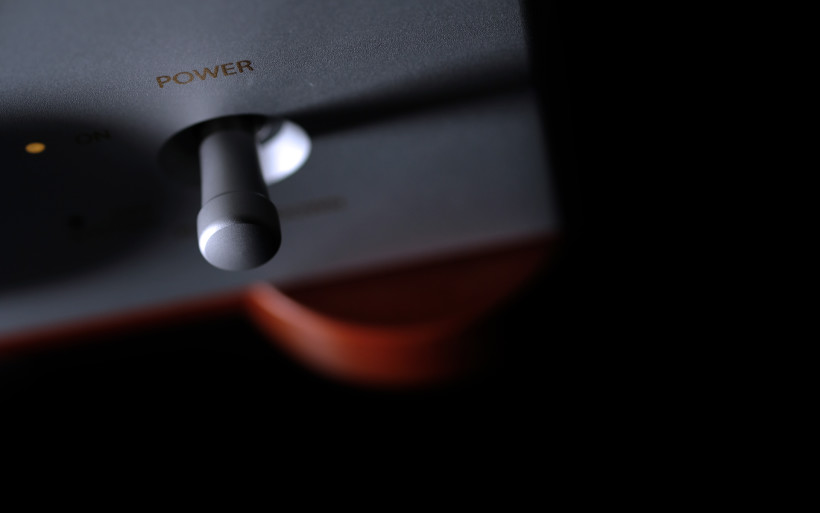 One of popular misconceptions associated with valves lists roundness and density as their primary attractors, plus mandatory fuzz and chunk found on the opposite end. You know the mantra: “Go quality class A transistors if you’re after richness and resolution!”. Wrong. The reality shows us that top valve products are inherently very fast, very open, full of nuances, admirably smooth, generously moist, vivid, demonstrably elastic both with grand bass impulses and far smaller bits of air moved, and loaded with harmonics on top of that. They provide it all, but usually remain delicate whilst doing so and need fitting loads to do the job. To follow along these lines, that’s what today’s SPEC stands for but sports far more generous power output. At my place it provided the full care package in fashion sensual, subtle, texturally generous and insightful enough to go way beyond what both my integrated amps are capable of, and did all this with the same speakers. Put shortly, the RSA-M99 finely blends virtues associated mainly with quality class A cases and has enough power output on tap to make most valve decks blush. That’s the main clincher for today and a very surprising one indeed.
One of popular misconceptions associated with valves lists roundness and density as their primary attractors, plus mandatory fuzz and chunk found on the opposite end. You know the mantra: “Go quality class A transistors if you’re after richness and resolution!”. Wrong. The reality shows us that top valve products are inherently very fast, very open, full of nuances, admirably smooth, generously moist, vivid, demonstrably elastic both with grand bass impulses and far smaller bits of air moved, and loaded with harmonics on top of that. They provide it all, but usually remain delicate whilst doing so and need fitting loads to do the job. To follow along these lines, that’s what today’s SPEC stands for but sports far more generous power output. At my place it provided the full care package in fashion sensual, subtle, texturally generous and insightful enough to go way beyond what both my integrated amps are capable of, and did all this with the same speakers. Put shortly, the RSA-M99 finely blends virtues associated mainly with quality class A cases and has enough power output on tap to make most valve decks blush. That’s the main clincher for today and a very surprising one indeed.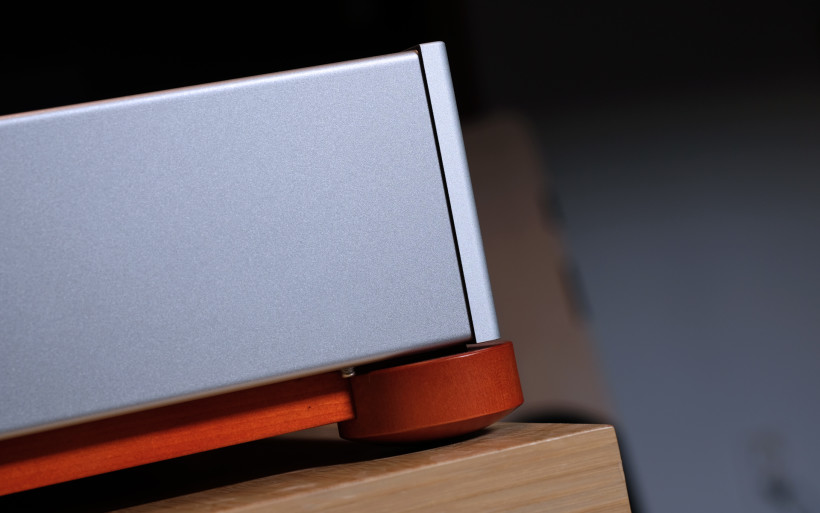 Let’s talk subtlety. My daily Brit’s expressive nature secures high notes on this specific count, but its syrupy voicing puts meat and roundness on the pedestal, resolving power occupies a step fair bit below. The slimmer quicker RSA-M99 the same vocal job does more clearly; all finishing touches it introduces more pronouncedly and also has muscle tissue in check, which leads to more balanced and nuanced result. One of this product’s greatest strengths is its ability to finely display small subtle things in recordings completely effortlessly. The 925’s aim is to prettify the result via universally enjoyable measures mainly related to boldness, gravity and pleasant warmth, whereas the SPEC goes deeper into music; it extracts more information out of it, then makes all particles and instrumental finishers more visible, pleasantly moist and tangible, yet is free from any extra roundness or temperature rise. It’s safe to say that today’s uses lesser amount of connective glue than the 925, but applies it more skilfully.
Let’s talk subtlety. My daily Brit’s expressive nature secures high notes on this specific count, but its syrupy voicing puts meat and roundness on the pedestal, resolving power occupies a step fair bit below. The slimmer quicker RSA-M99 the same vocal job does more clearly; all finishing touches it introduces more pronouncedly and also has muscle tissue in check, which leads to more balanced and nuanced result. One of this product’s greatest strengths is its ability to finely display small subtle things in recordings completely effortlessly. The 925’s aim is to prettify the result via universally enjoyable measures mainly related to boldness, gravity and pleasant warmth, whereas the SPEC goes deeper into music; it extracts more information out of it, then makes all particles and instrumental finishers more visible, pleasantly moist and tangible, yet is free from any extra roundness or temperature rise. It’s safe to say that today’s uses lesser amount of connective glue than the 925, but applies it more skilfully. Past the 925 experience it was time to see how the EX-M1 would fare against the far pricier SPEC. The effect of this battle arrived rather quickly. Of all three integrated machines, the Chinese drove my daily loudspeakers the best and that was clear. It delivered the most powerful and fearless blows to size wise land the most impressive wall of sound in front of me. This came as no surprise, Kinki Studio’s integrated amp proved to be one of the best matches for my notorious Swiss loudspeakers I was able to find in last four years. The SPEC was slimmer and not as present in the lowest audible octaves, however on textural maturity and extraction of tiniest bits it clearly scored higher to introduce more euphonic and dainty result. It was also heard that the EX-M1 provided lots of horsepower, but the RSA-M99’s nimbleness combined with its inherent valve-alike tunefulness resulted in more organic and pleasant ride all in all. Quality versus quantity was the effect. Even though I’ve been enjoying the EX-M1 with Boenicke W8, I’d go for the RSA-M99 in a heartbeat and without looking back.
Past the 925 experience it was time to see how the EX-M1 would fare against the far pricier SPEC. The effect of this battle arrived rather quickly. Of all three integrated machines, the Chinese drove my daily loudspeakers the best and that was clear. It delivered the most powerful and fearless blows to size wise land the most impressive wall of sound in front of me. This came as no surprise, Kinki Studio’s integrated amp proved to be one of the best matches for my notorious Swiss loudspeakers I was able to find in last four years. The SPEC was slimmer and not as present in the lowest audible octaves, however on textural maturity and extraction of tiniest bits it clearly scored higher to introduce more euphonic and dainty result. It was also heard that the EX-M1 provided lots of horsepower, but the RSA-M99’s nimbleness combined with its inherent valve-alike tunefulness resulted in more organic and pleasant ride all in all. Quality versus quantity was the effect. Even though I’ve been enjoying the EX-M1 with Boenicke W8, I’d go for the RSA-M99 in a heartbeat and without looking back.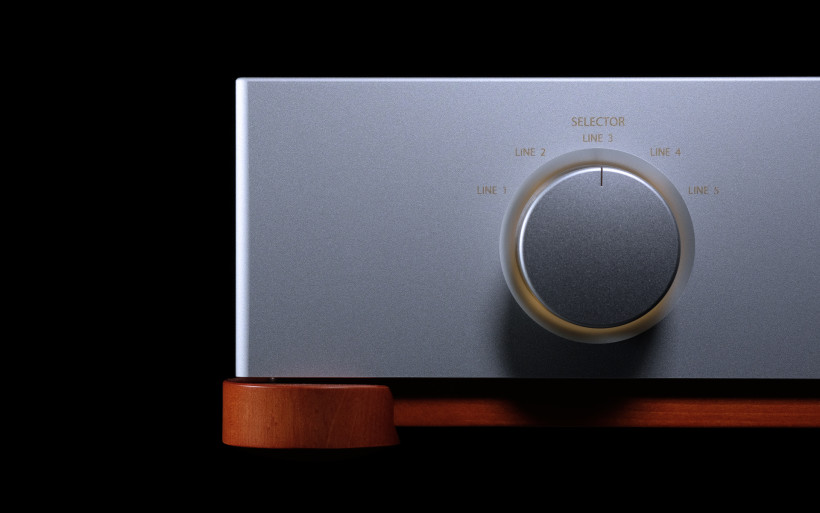 In the end, the only thing I missed in SPEC’s sound profile was that extra bit of power to have even more control over my W8, more of that unique crack and shove these slim floorstanders showcased me once or twice in the past. But other than this, today’s and the EX-M1 weren’t quite comparable on any other count, the quality gap between them was big enough to reflect their price difference rather well. Early on I suspected that the RSA-M99 would tonally land in-between the other two amps and this in fact checked out. But disparities in quality between SPEC’s and Kinki’s hardware outgrew my initial expectations.
In the end, the only thing I missed in SPEC’s sound profile was that extra bit of power to have even more control over my W8, more of that unique crack and shove these slim floorstanders showcased me once or twice in the past. But other than this, today’s and the EX-M1 weren’t quite comparable on any other count, the quality gap between them was big enough to reflect their price difference rather well. Early on I suspected that the RSA-M99 would tonally land in-between the other two amps and this in fact checked out. But disparities in quality between SPEC’s and Kinki’s hardware outgrew my initial expectations. As gourmet chefs, both the RSA-M99 and the 925 had ingredients of similar quality at their disposal. But the result was either a generous plate full of tasty aromatic food, or a more modest dish, yet nicer to look at, easier to digest, more balanced and also profiled to be structurally more kosher and complex. At this point you probably know which amp did what. The EX-M1 among these two cooks would land the biggest plate loaded with the most stuff on it, but of the least refined though still perfectly edible nature. The Chinese simply didn’t run a posh and pricey restaurant as the other two clearly did, but a quality food truck instead, namely the wallet-friendly go-to place to get your belly full quick.
As gourmet chefs, both the RSA-M99 and the 925 had ingredients of similar quality at their disposal. But the result was either a generous plate full of tasty aromatic food, or a more modest dish, yet nicer to look at, easier to digest, more balanced and also profiled to be structurally more kosher and complex. At this point you probably know which amp did what. The EX-M1 among these two cooks would land the biggest plate loaded with the most stuff on it, but of the least refined though still perfectly edible nature. The Chinese simply didn’t run a posh and pricey restaurant as the other two clearly did, but a quality food truck instead, namely the wallet-friendly go-to place to get your belly full quick.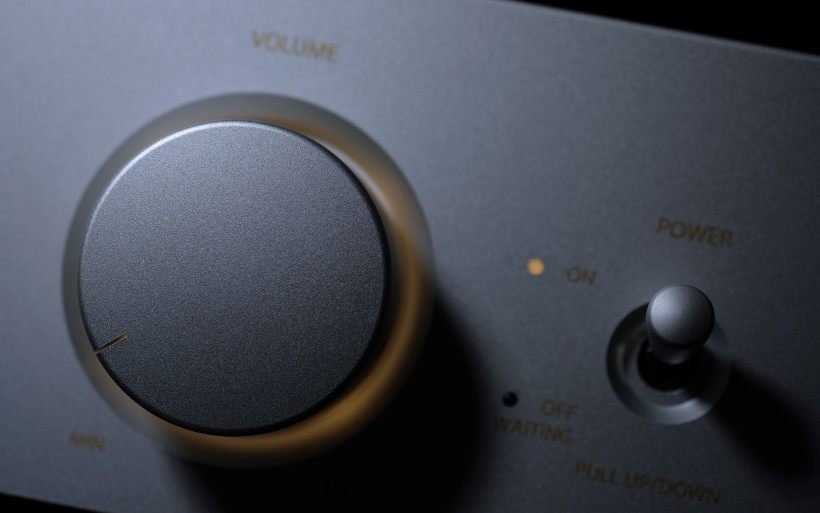 It’s up to a debate what’s nicer to privy ears; heft and roundness the 925 does so well, the EX-M1’s torque to objectively have my W8 in utmost iron grasp, or the RSA-M99’s unbeatable elasticity, vividness and balance. However, on sheer sophistication count (tangibility, fluidity, smoothness, insight, clarity, subtlety, tunefulness and overall seasoning) the three amps weren’t alike, here the SPEC reigns supreme with no second guesses. At low SPL this deck showcased the most informationally complete musical landscape as well, but most importantly its approach to music I’ve found unique; not only seasoned but also artful. I’m aware of only several products capable of playing the quality game this high, Bakoon AMP-13R and Thöress F2A11 come to mind, however neither of these sports power output as generous as this review’s SPEC.
It’s up to a debate what’s nicer to privy ears; heft and roundness the 925 does so well, the EX-M1’s torque to objectively have my W8 in utmost iron grasp, or the RSA-M99’s unbeatable elasticity, vividness and balance. However, on sheer sophistication count (tangibility, fluidity, smoothness, insight, clarity, subtlety, tunefulness and overall seasoning) the three amps weren’t alike, here the SPEC reigns supreme with no second guesses. At low SPL this deck showcased the most informationally complete musical landscape as well, but most importantly its approach to music I’ve found unique; not only seasoned but also artful. I’m aware of only several products capable of playing the quality game this high, Bakoon AMP-13R and Thöress F2A11 come to mind, however neither of these sports power output as generous as this review’s SPEC. At some point, the 925 versus RSA-M99 case struck me as very much similar to shifts I’ve heard past going from KR Audio’s T100 to Living Voice’s 300B DHTs in my Pacific DAC. If you’d like to know more, please take a look here and replace the 300B from this publication with today’s RSA-M99. Less chunk and gravity in favour of more sensual and refined approach to music was the outcome back then, and that’s the result today as well.
At some point, the 925 versus RSA-M99 case struck me as very much similar to shifts I’ve heard past going from KR Audio’s T100 to Living Voice’s 300B DHTs in my Pacific DAC. If you’d like to know more, please take a look here and replace the 300B from this publication with today’s RSA-M99. Less chunk and gravity in favour of more sensual and refined approach to music was the outcome back then, and that’s the result today as well.
Summary
Neither my familiarity with SPEC Corp.’s overall profile, nor auditions of its products at various shows could possibly prepare me for today’s machine, let alone enthusiasts with the usual bashing attitude towards class D fully developed. But that’s good, the surprise the RSA-M99 has in store for them will be this much better. And the final blow? Even deadlier…
SPEC RSA-M99 from afar might look like yet another minimalist if not rather regular audio box, but up close it’s anything but. Exemplary build quality, attention to details, tasteful wooden twist underneath and predictable always pleasantly cool behaviour, all result in the impression of a well-engineered luxurious looker. It’s deliberately dressed to be modest and inconspicuous, yet all in all brilliantly executed if someone asks me. In today’s I didn’t even miss remote volume control knowing why was it ditched in the first place, but you might. If so, the manufacturer has you covered and that’s good.
SPEC RSA-M99’s visuals and functionality aside, its sonic profile is where things gain momentum to truly go way beyond the usual. Machines voiced this elegantly, fetchingly, palpably and insightfully at the same time, are very rare. But today’s very much class A alike attitude and beefy power output label it as a standalone case in my privy book, not quite comparable to anything else I’m familiar with, size and price wise not even close. How much any other similarly powerful class A product would set you back? How much space would it need? How hot would it be? And how heavy? If you’re not after answers to all these questions yet list class A charm and stout watts as your primary criteria, do yourself a favour and at least audition this report’s SPEC. It’s worth every penny, you’ll thank me later. ‘Till next time.
Associated Equipment:
- Amplifier: Trilogy 925, Kinki Studio EX-M1
- DAC: LampizatOr Pacific (KR Audio T-100 / Living Voice 300B + KR Audio 5U4G Ltd. Ed.)
- Speakers: Boenicke Audio W8, Xavian Jolly
- Transport: fidata HFAS-S10U
- Speaker cables: Boenicke Audio S3, LessLoss C-MARC
- Interconnects: Audiomica Laboratory Erys Excellence
- Power components: Gigawatt PC-3 SE EVO+, Gigawatt PF-2 + Gigawatt LC-2 MK2 + Forza AudioWorks Noir Concept/Audiomica Laboratory Ness Excellence/LessLoss C-MARC
- Rack: Franc Audio Accesories Wood Block Rack
- Music: NativeDSD
Retail prices of reviewed components in EU (incl. 22% VAT):
- SPEC RSA-M99: €10’900
Manufacturer: SPEC Corporation


